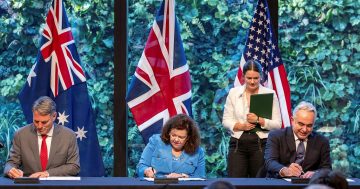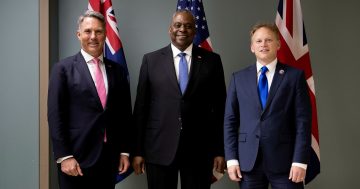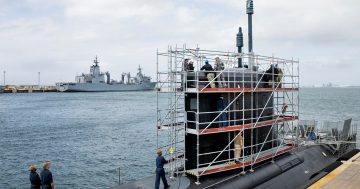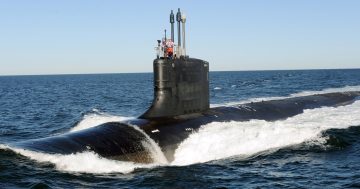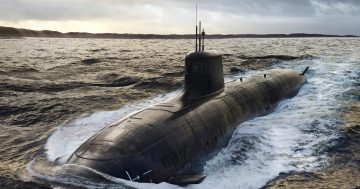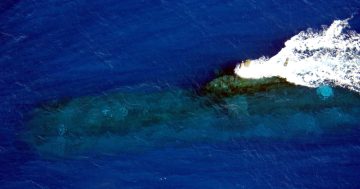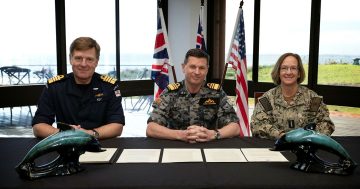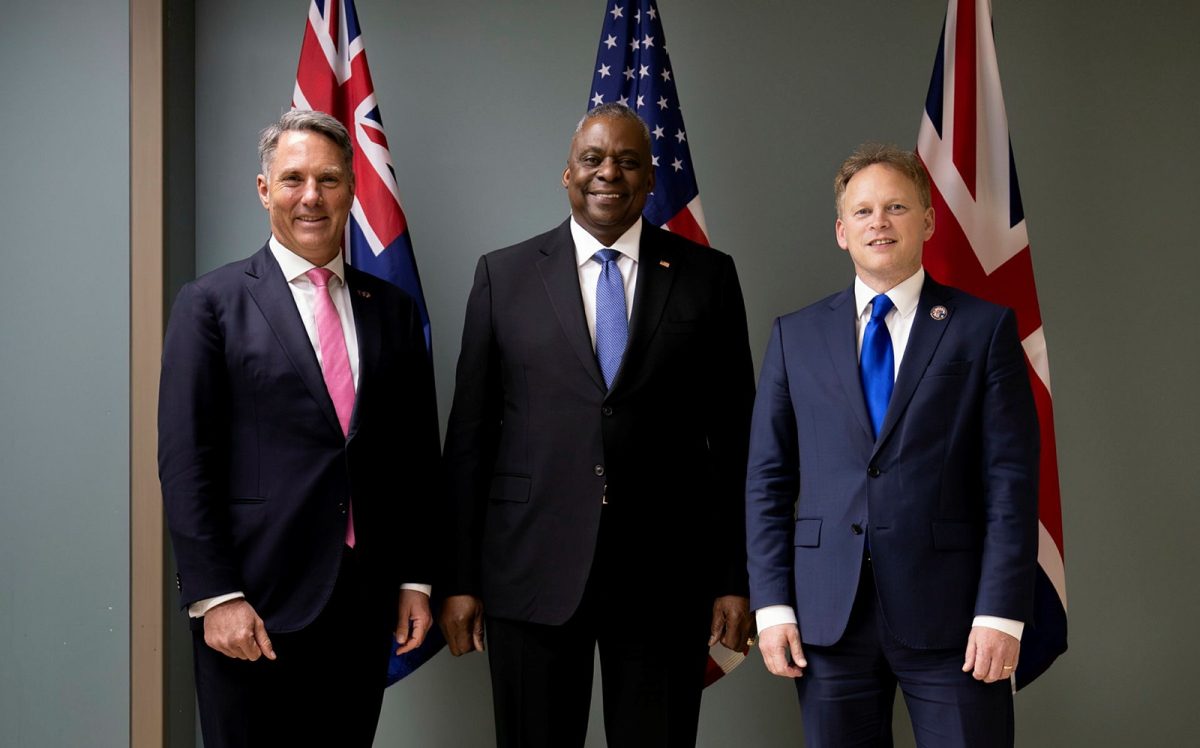
AUKUS Defence Minister and Secretaries Richard Marles, Lloyd Austin and Grant Schapps. Photo: ADF.
Reports that Japan may become a member of the AUKUS trilateral construct between Australia, the UK and the US seem to be somewhat premature, but there may be scope for Japan to contribute to some of the new capabilities being developed under the pact.
AUKUS revolves around two Pillars. The Pillar I construct will supply Australia with nuclear-powered submarine (SSN) technology with a view to Australia operating and building SSNs from the 2030s.
But Pillar I is unlikely to be of interest to Japan, especially as that country is considered a leader in the development of diesel-electric-powered submarines (SSKs) and has a large fleet of advanced SSKs already in service. It is also unlikely to have a requirement for nuclear-powered submarines with the capability to range far from their home bases for long periods, like that of Australia, the UK and the US.
The Pillar II construct is a much broader arrangement and allows for the cooperative development of new capabilities across multiple domains including cyber, autonomy, quantum, space, hypersonics, artificial intelligence, electronic warfare and undersea technologies.
Many of these capabilities are much more likely to be of interest to Japan, and it would be of greater collective benefit to the current AUKUS partners to bring Japan into the fold.
Following an 8 April summit, the defence ministers of all three nations released a statement in which they stressed that they were “pooling the talents of our defence sectors to catalyse, at an unprecedented pace, the delivery of advanced capabilities”.
“Partners are working with investors, private capital, and traditional and non-traditional industry to translate disruptive technology into asymmetric capability for our three defence forces,” they said.
One of the key factors in the past includes the freeing up of defence trade restrictions surrounding advanced technologies under the US’s National Defense Authorization Act for Fiscal Year 2024, Australia’s Defence Trade Controls Amendment Act 2024, and the UK’s pending Open General Export Licence Program.
“These collective mechanisms will enable most defence items to transfer or re-transfer between the three countries without needing further authorisation,” the ministers said.
With the prospect of Japan participating in some of these activities but not identifying any in particular, the statement said: “Since the inception of AUKUS, our nations have been clear in our intent to engage others in Pillar II projects as our work progresses.
“AUKUS partners have developed principles and models for additional partner engagement in individual Pillar II projects, and will undertake consultations in 2024 with prospective partners regarding areas where they can contribute to, and benefit from, this historic work.
“In identifying collaboration opportunities, we will take into account factors such as technological innovation, financing, industrial strengths, ability to adequately protect sensitive data and information, and impact on promoting peace and stability in the Indo-Pacific region.
“Recognising Japan’s strengths and its close bilateral defence partnerships with all three countries, we are considering cooperation with Japan on AUKUS Pillar II advanced capability projects.”
Other nations such as New Zealand and Canada have also been mentioned as possible project participants, if not full AUKUS members.
Australian Defence Minister Richard Marles undertook to keep New Zealand officials briefed on AUKUS developments during a summit between he, Foreign Minister Penny Wong and their New Zealand counterparts earlier this year.
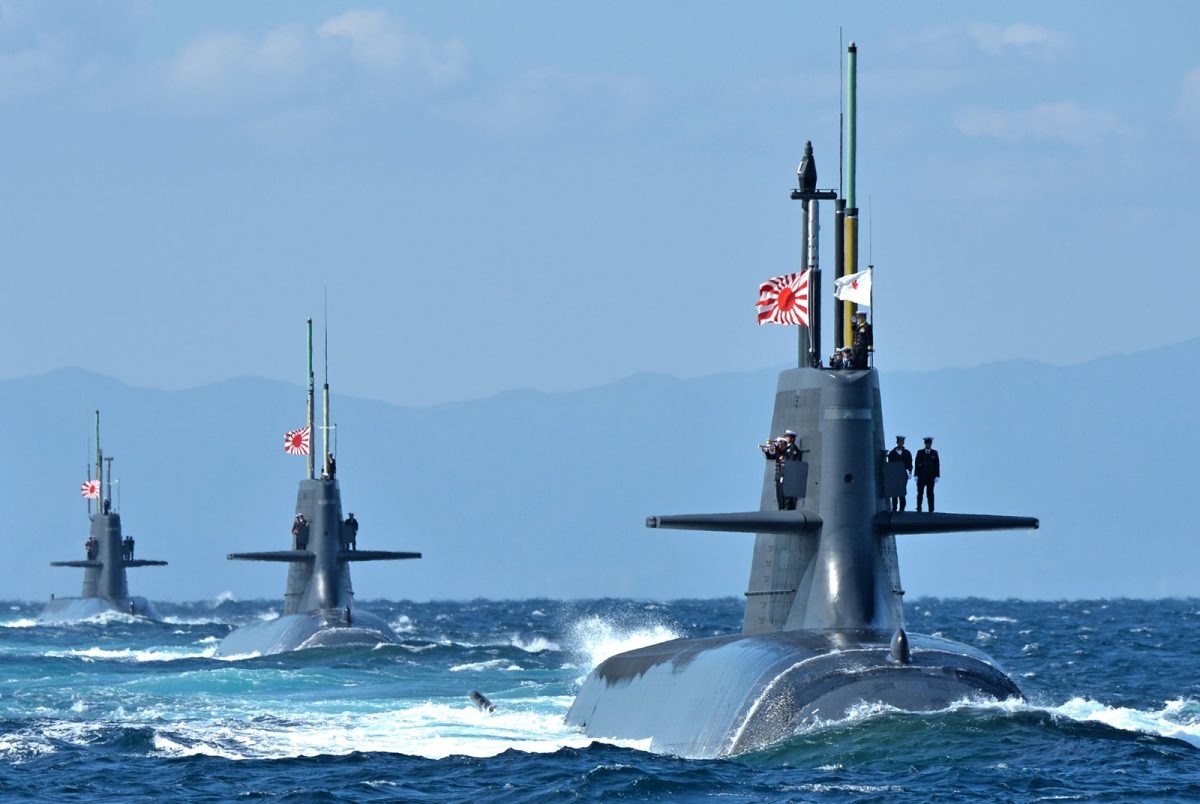
Japan’s Soryu and new Taigei-class boats are considered some of the world’s best conventional submarines. Photo: JMSDF.
But Canada might be more suitable as a possible full ”CAUKUS” partner, especially as it has many of the same security concerns and capability requirements as Australia, and is already able to work within the US Government’s strict security export regimen.
Indeed, in releasing his defence policy review on 8 April, Canadian Prime Minister Justin Trudeau not only hinted that his country might also be interested in collaborating on some Pillar II activities as part of a defence funding boost, but that a fleet of new submarines was also a priority for his government.
In his paper Canada’s Defence Challenges in the Indo-Pacific: A view from Down Under, published last week, the ANU’s Professor of International Security and Intelligence Studies John Blaxland suggested that, like Australia, Canada previously faced insurmountable challenges in even considering a nuclear-powered submarine program.
But he said the Australian precedent was instructive.
“What once was considered inconceivable has become not only imaginable but endorsed and legislated by the US Congress,” he said.
“The precedent also suggests Canada should get serious about its submarine replacement program.
“It already has a civil nuclear industry, unlike Australia, which has a lot it can potentially share. In fact, Canada has the potential to make a significant contribution to the development and acquisition of nuclear-propulsion submarines, alongside allies.”


